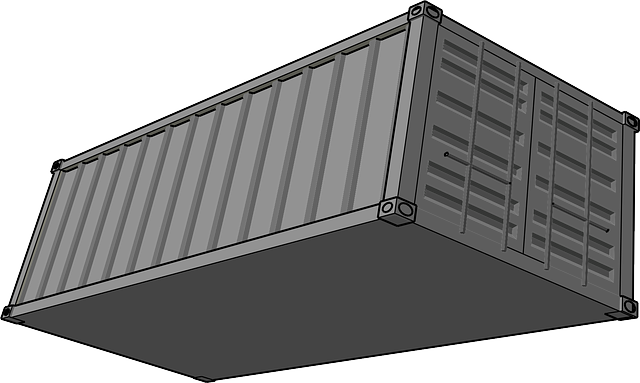Cargo liability insurance is essential protection for businesses in transportation and logistics, covering financial losses from damaged or lost goods during transit, including legal expenses. Policies vary based on factors like cargo value and transport mode. Businesses must thoroughly understand their policies and conduct risk assessments by evaluating packaging, industry regulations, and past incidents to mitigate potential liabilities. Preventative measures such as proper planning, packaging, training, and staying current with regulations minimize claims. In case of a claim, prompt acknowledgment, data gathering, and strategic documentation are crucial for a fair claims process under the policy terms.
In the dynamic landscape of logistics, understanding and mitigating risks is paramount to avoid costly liability claims. This comprehensive guide delves into crucial strategies for navigating potential hazards that can expose your business to legal repercussions. From grasping the intricacies of cargo liability insurance, including its coverage and limits, to risk assessment techniques and effective mitigation practices, we provide a strategic roadmap. Additionally, learn best responses when handling claims, ensuring thorough documentation and legal considerations. Maximize protection with these essential insights into cargo liability insurance.
Understanding Cargo Liability Insurance: Coverage and Limits

Cargo liability insurance is a crucial component in mitigating risks that can lead to liability claims, especially for businesses involved in transportation and logistics. This type of insurance protects against financial loss arising from damage or loss of goods during transit. Understanding the coverage and limits of cargo liability insurance is essential for businesses to ensure they are adequately protected.
Coverage under cargo liability insurance typically includes compensation for the cost of damaged or lost goods, as well as legal fees associated with any claims that arise. The limits of this insurance vary based on factors such as the value of the cargo, the mode of transportation, and the jurisdiction in which the incident occurs. Businesses should carefully review their policy to comprehend the specific coverage and limits applicable to their operations, ensuring they have sufficient protection against potential liability claims related to cargo losses or damages.
Risk Assessment: Identifying Potential Liabilities

Risk assessment is a crucial first step in mitigating potential liabilities, especially in areas like transportation and logistics where cargo liability insurance plays a significant role. By thoroughly evaluating your operations, you can identify risks that may lead to costly liability claims. This involves scrutinizing every stage of the supply chain—from procurement to delivery—to pinpoint possible hazards. For instance, assessing the condition of packaging materials ensures they are fit for the journey and reduce the risk of damage to goods during transit.
Identifying potential liabilities also requires understanding the legal landscape relevant to your industry. Staying updated on changing regulations and industry standards helps in anticipating and addressing emerging risks. Regular reviews of past incidents within your organization can provide valuable insights into recurring issues, enabling proactive measures to prevent them from escalating into liability claims.
Mitigation Strategies: Preventative Measures and Best Practices

Implementing robust preventative measures is a cornerstone of risk mitigation strategies, designed to minimize the likelihood of liability claims related to cargo transportation. A comprehensive approach involves adhering to best practices throughout the logistics process. This begins with meticulous planning and extends to operational procedures. For instance, ensuring proper packaging and secure loading can significantly reduce the risk of damage or loss during transit. Regular training for staff on handling procedures and safety protocols is another vital practice, fostering a culture of responsibility and awareness.
Additionally, staying informed about industry regulations and updating practices accordingly plays a pivotal role in risk mitigation. Carrying adequate cargo liability insurance is also essential, offering financial protection against potential claims. Proactive measures such as these not only safeguard against legal liabilities but also contribute to a smoother operational flow, enhancing the overall efficiency of cargo transportation.
Handling Claims: Response, Documentation, and Legal Considerations

When faced with a liability claim, a swift and strategic response is key to mitigating potential damages. The initial steps involve acknowledging the claim, gathering relevant information, and documenting every interaction related to the incident. This includes recording details of the damaged cargo, the circumstances surrounding the incident, and any communication with the claimant or their representatives. Timely documentation not only ensures accuracy but also serves as crucial evidence during legal proceedings, should they arise.
Legal considerations play a significant role in handling claims, particularly when dealing with cargo liability insurance. Understanding policy terms and conditions is essential to navigating the claim process effectively. Insurers often require comprehensive reports, including descriptions of damage, potential causes, and steps taken to mitigate further losses. Compliance with these requirements is vital to ensuring a smooth claims process and receiving adequate compensation for any legitimate claims.
Understanding and implementing effective risk mitigation strategies is key to safeguarding against potential liability claims. By conducting thorough risk assessments, adopting best practices, and handling claims promptly and professionally, businesses can significantly reduce their exposure. Cargo liability insurance serves as a crucial safety net, offering tailored coverage to protect against financial losses. Embracing preventative measures ensures a robust defense against liabilities, fostering operational resilience in an ever-evolving business landscape.
